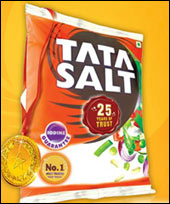
Too many small-business owners think
marketing is like a trip to the dentist — something you just have to do
every six months or so.
But when marketing is continuous and
targeted rather than occasional and generic, business gets easier. If
prospects have a positive view of your wares and reputation before you
call or before they start shopping, you're that much closer to getting a
sale.
The next news flash is that ongoing
marketing isn't tied to a price tag. It's defined only by putting the
right message in front of the right person at the right time.
Here are 10 ideas for doing that — on the cheap.
1. Take steps to make customers feel special.
Customers respond to being recognized, especially in these rush-rush,
get-the-lowest-price times. "Even with a Web-based business, good
customer service is possible," says Denise McMillan, co-owner of
Plush Creations,
an online retailer of handcrafted travel bags. McMillan encloses a
small, rose-scented sachet in every jewelry and lingerie bag she sells
and also sends a handwritten thank-you note. "The sachet and note cost
pennies but add something special to the purchase," she says.
2. Create business cards that prospects keep.
Most business cards are tossed within hours of a meeting. Instead of
having your card tossed, create one that recipients actually will use —
say, a good-looking notepad with your contact info and tagline on every
page. "The business card notepad is referred to almost daily, kept for
30 days or so and carries a high remembrance factor," says Elliott
Black, a Northbrook, Ill., marketing consultant who specializes in small
businesses.
3. Stop servicing break-even customers.
If this idea makes you gasp, think harder. You're falling for the
fallacy of increasing sales instead of boosting profits. If you stop
marketing to unprofitable customers, you have more time and resources
for customers who actually grow your business. "More than likely, 20% of
your customer base is contributing 150% to 200% of total annualized
profit (TAP); 70% is breaking even; and 10% is costing you 50% to 100%
of TAP," says Atlanta marketing consultant Michael King. Take a detailed
look at your customer profitability data and then direct premium
services and marketing to customers who count. (
Microsoft Outlook 2010 with Business Contact Manager can help you analyze customer histories.)
4. Develop an electronic mailing list and send old-fashioned letters.
Most businesses have harnessed the power of e-newsletters — and you
definitely should be sending out one, too. It's very cost-effective. But
because e-mail marketing is now nearly ubiquitous, you can quickly
stand out by occasionally sending personal, surface mail letters to
customers and prospects. Just make sure the letter delivers something
customers want to read, whether an analysis of recent events in your
field, premium offers or a sweetener personalized for the recipient (a
discount on his next purchase of whatever he last purchased, for
instance). "This mailing has to have value to those that read it, so it
reflects the value of what you offer," says Leslie Ungar, an executive
coach in Akron, Ohio. "Remember, the best way to sell is to tell." The
process is simplified by creating a letter template and envelope or
customer label mailing list in Microsoft Office Word in
Office 2010, which you can print out. The mailing list is easily created in Excel and then imported into Word.
5. Boost your profile at trade shows and conferences.
You can quickly create signage, glossy postcards with your contact
information, product news inserts or an event mini Web site — all with
Microsoft Office Publisher. Check out its versatile features.
6. Combine business with pleasure — and charity.
Spearhead an event, party or conference for a cause you care about.
That puts you in the position of getting to know lots of people, and
shows off your small business leadership skills. "I host an annual
baseball game where I take hundreds of clients to a Cubs game at Wrigley
Field," says Kate Koziol, who owns a public relations agency in
Chicago. "Last year, I took 300 people and we raised $10,000 for a local
children's hospital. Few people turn down a game and it's a great
networking opportunity for guests. It lets me reconnect with current
clients and impress potential clients."
7. Create a destination.
Bookstore chain Barnes & Noble has its coffee bars. Furnishings
giant Ikea offers child-care centers and cafeterias. Why? So customers
gravitate to the stores to enjoy an experience and hang out for a while.
Sunday morning at Barnes & Noble becomes a pleasant weekend
routine, rather than a shopping errand. Steal this idea. This tip isn't
limited to offline destinations, either. Using pay-per-click
advertising, you can cheaply drive traffic to a one-time news event or
specialty offerings, points out Jay Lipe, a small-business marketing
consultant based in Minneapolis. Lipe set up a Web site for
Games by James,
a retailer of board games, and quickly attracted customers via
pay-per-click ads. "The effect was overnight," says Lipe. "Traditionally
in the marketing world, it takes weeks or even months to generate
acceptable awareness and traffic. Here we saw traffic spike overnight."
8. Become an online expert.
This is the "free sample" approach to bringing in business. Research
active e-mail discussion lists and online bulletin boards that are
relevant to your business and audience. Join several and start posting
expert advice to solve problems or answer questions. You may need to
keep this up for a bit. But the rewards come back in paying clients and
referrals. "E-mail discussion lists have been my single largest source
of clients over the last eight years," says Shel Horowitz, a
small-business marketing consultant based in Northampton, Mass.
9. Court local media.
Editorial features convey more credibility with prospective clients
than paid advertising does. To get coverage from the local media,
whether from the town newspaper, from TV or radio stations, or from
trade journals, you need a fresh, timely story. It's usually worthwhile
to hire an experienced publicist to position the stories, target
appropriate media representative and write and send press releases.
Usually, you can work on a short-term or contingency basis.
10. Finally, don't let customers simply slip away.
Make an effort to reel them back in. It costs a lot less to retain a
disgruntled or inactive customer than to acquire a new one. If you
haven't heard from a customer in a while, send a personalized e-mail
(you can automate this process), inquiring whether all is well. For a
customer who suffered a bad experience, pick up the phone, acknowledging
the unpleasantness and ask if there's anything you can do. A discount
can't hurt either. Being kind to customers is the smartest low-cost
marketing you can do.
Tanay Tapas
PGDM 1st









 Too many small-business owners think
marketing is like a trip to the dentist — something you just have to do
every six months or so.
Too many small-business owners think
marketing is like a trip to the dentist — something you just have to do
every six months or so.





 No
matter which marketing management program you're enrolled in, you'll
receive the training and experience they need to be successful in your
chosen field.
No
matter which marketing management program you're enrolled in, you'll
receive the training and experience they need to be successful in your
chosen field. Many of our leading-edge faculty play prominent roles in shaping perspectives on relevant professional issues.
Many of our leading-edge faculty play prominent roles in shaping perspectives on relevant professional issues. Our graduates command competitive salaries at some of the top businesses in the world. Explore your career possibilities.
Our graduates command competitive salaries at some of the top businesses in the world. Explore your career possibilities.